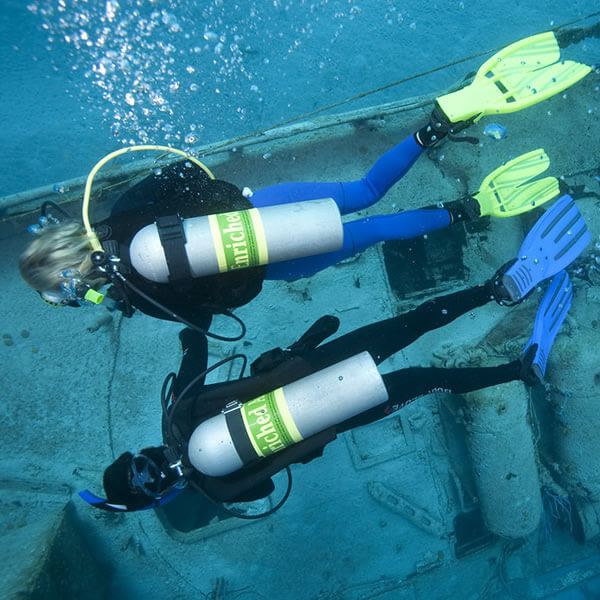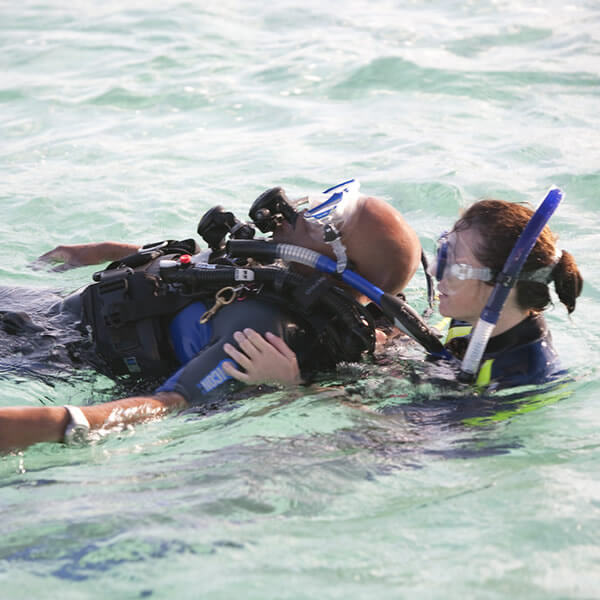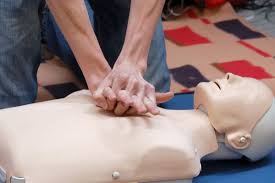
Xaloc Diving Center measures against COVID-19 in the Classroom
– Digital training materials: we use this type of materials, except in those courses in which they do not exist
– We reduce access to the classroom for the teaching of any course.
– The support sessions / tutorials by the instructors are developed online although, if we have to do it in person, we will do them in an open space
Measures against COVID-19 in Advanced or Specialty courses
We follow the guidelines already marked in the Xaloc Measurements section in Common Areas must be followed , which collect general information on how to reserve and how to act in the Diving Center, and in the Measurements in diving operations , that refer to the port and the boat.
Although until recently it was believed that the risk of contagion under seawater is zero, today we cannot guarantee it, so we must take certain precautions with exercises to avoid possible contagions that may occur during training in open water.
The risk is limited to those training exercises in diving courses where the equipment is shared with the partner. To carry out these exercises we will have alternatives. Following the guidelines set by the SSI organization:
In the Sidemount Diver specialty, in addition and because divers use all regulators during the dive when sharing gas: the preferred option is to add one or more additional second stages (shorter hose) that the diver uses. To share gas, they switch to their other bottle and go through the second stage of the long sanitized hose.


Xaloc Diving Center measures against COVID-19 during Stress & Rescue courses
We follow the guidelines already marked in the Xaloc Measurements section in Common Areas must be followed , which collect general information on how to reserve and how to act in the Diving Center, and in the Measurements in diving operations , that refer to the port and the boat.
Although until recently it was believed that the risk of contagion under seawater is zero, today we cannot guarantee it, so we must take certain precautions with exercises to avoid possible contagions that may occur during training in open water.
The risk is limited to those training exercises in diving courses where the equipment is shared with the partner. To carry out these exercises we will have alternatives, following the guidelines set by the SSI organization:
Tired / Panic Diver Skills
Disinfect hands before and after each exercise, have remote verbal exchanges, allow rescuers / victims to use regulators, keep masks while practicing the technique, even when the “victim” may reject them (in a panic).
Unresponsive diver on the surface
Washes / disinfects hands and face before and after each exercise.
Wear rescue breathing masks (a valve can be used if it can be kept dry), each specific for a single student. All divers should be very aware of the exhalation instructions.
Rescuers do not make lip contact with the rescue breathing mask and after demonstrating that they can blow into the mask, turn their head and exhale away from the victim.
To practice word of mouth, options include:
● Wears a rescue breathing mask on the victim, but uses mouth-to-mouth techniques (ie, pinching the nose on the rescue breathing mask) and follows the procedures mentioned in the rescue breathing mask technique .
● Wear face shields commonly used with CPR manikins during exercise to avoid skin-to-skin contact. Rescuers do not make mouth contact and exhale away from the victim.
● Pretend by removing the victim’s mask but leave it in place. This prevents the rescuer from having to touch the victim’s nose directly. Again, rescuers and the victim avoid breathing toward each other.
Measures for First Aid courses
As there are no pool practices, the guidelines already marked in the Xaloc Measurements section in Common Areas must be followed, which collect general information on how to reserve and how to act in the Diving Center, and in the Measurements in diving operations, that refer to the port and the boat.
React Right Courses (Primary / Secondary Care)
During CPR, first aid, and emergency oxygen training, avoiding contact and maintaining social distancing can be more difficult. Participants can reduce risk by wearing medical masks and barriers, sanitizing / washing their hands frequently, and staying alert.
For one-person CPR training, we will provide each student with an individual manikin that will be fully disinfected (including lung replacement) according to the manufacturer’s recommendations before use by a different person and after training.
We must ensure the use of medical masks and social distancing among students.
